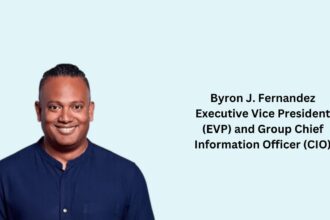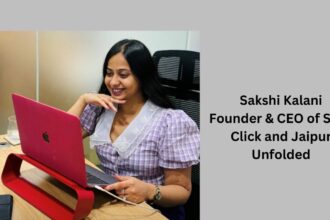How Risk-averse People Become Startup Founders: Creating No-loss Scenarios

When I left my job as an investment professional at Softbank Vision Fund to start my own company, I saw broadly two reactions: Some applauded me for taking the “leap of faith” to do what I wanted. Others were concerned that I was throwing away a successful career path. Both, I think, overestimate the amount of risk I took to start my own company.
There seems to be a misconception — even among my peers not unfamiliar with the tech world — that all startup founders are risk-taking. To be fair, I was also inundated with stories of entrepreneurs going “all in”, and risking everything they have to make history. For example, I was reading Shoe Dog, a biography about Phil Knight who founded Nike, and how the founder put his house on the line to float capital for his company.
But not every startup founder needs to be risk-taking. I’m the opposite. I’m extremely risk averse.
In fact, I de-risked for five years before becoming a full-time founder: I de-risked my background, de-risked my career, and de-risked my startup. Most of this process can be boiled down to creating no-loss or minimal-loss scenarios.
De-risking my background.
My closest friends from college and from my first consulting job will know that I’ve always wanted to start my own company. That was early 2016. It’s now 2021. What took so long?
Not everyone comes from a background that is conducive to starting a company. There might be issues related to relationships, finances, health or any number of reasons that add too much risk to start a company.
My hurdle was my financial background. My problem of starting a company with the spirit of grit, is that I’d have an extraordinarily challenge time recovering from failure. For example, imagine I was the breadwinner for my family, and I decide to leave my job, not take a salary, and then max out my own credit card to finance my company. The downside would be catastrophic. De-risking this part of my life took a long time. But I was intentional about choosing careers that optimize three things:
- Build a financial safety net for my family quickly (high-salaried jobs).
- Build sector expertise for an area of my interest (fintech & marketplaces).
- Build a network of friends and colleagues who could help me have a running start when I start my startup.
Starting my career immediately out of college, I spent two years at Oliver Wyman as a management consultant. There, I built basic skillsets and some sector expertise in financial services including payments and lending. Having most of my expenses during the week covered by the firm was also helpful in my own objectives. After a short break, I moved on to Softbank Vision Fund as an investment professional in both the Bay Area and the London quarters. There, I built skillsets more relevant to starting a company, including how investors conduct due diligence and think about investments. Having focused on fintech and marketplace investments, it helped me build some knowledge and intuition of how these companies operated. Finally, it was invaluable in building a network of founders and investors. Finally,
There is no doubt that both luck and work were involved in landing these jobs, but I had created a no-loss scenario. In other words, at a minimum, I built a financial safety net for family as well as a strong foundation for my career even if my startup was to fail in the future.
De-risking my career trajectory.
By 2020, I was lucky to have built a strong career trajectory for myself. Here was the problem: it was extremely hard to throw it away for a binary outcome of doing a startup with low probabilities of success.
One option was to work on a startup part-time until I reach high level of conviction. Personally, I found both consulting and investing to be pretty demanding jobs for this approach to work. Either I was distracted from my job working on the startup or I couldn’t spend enough time to iterate the ideation process in a meaningful way. So my primary objective was creating time to focus on startup ideas without compromising my career trajectory.
My approach of hedging my career while creating time to work on my startup was grad school.
Last year, I started a 1-year Master degree at University of Oxford. There are benefits to being a student founder, including great access to non-dilutive capital and a large talent pool. Doing this not only did it give me rich experience, but also create a minimal loss scenario for myself.
Here’s what I mean. Suppose my threshold to go full-time on a startup is (1) High conviction in an idea and (2) Raising capital. Assuming I have conviction in my idea, the remaining criteria is raising capital. By doing grad school rather than quitting my job to start my company, it narrowed down the outcome to one of two outcomes:
- I raise money. I continue working on the startup to validate the idea to find product market fit.
- I fail to raise money. I graduate with a degree from Oxford and get a job like everyone else in the class.
Notice that my worst case scenario is getting a graduate degree from Oxford. Most people would consider that to be a pretty good outcome. Nevertheless, I called this a minimal-loss scenario as opposed to a no-loss scenario, because of the opportunity cost. Many of my colleagues hit VP when I was working on this startup. I can’t hedge everything, but I can definitely create higher-expected return strategies, while capping my downside.
De-risking my startup
I’m nowhere near being successful with my startup, but there’s a few things I found helpful when de-risking the startup itself.
1. De-risking the idea
The most popular approach of doing startups is coming up with ideas, setting up a hypothesis, and running small experiments to test it. It’s important to understand different forms of risk when it comes to testing ideas. The distinction I found helpful were the following:
User/ demand risk. Do users actually want the product that I’ll be building at their price point?
The biggest mistake I made when de-risking here was asking bad questions to potential customers.
The book Mom Test does a great job of helping first-time founders ask good questions to validate a real pain point. For example, asking your friends “would you pay $10 for my new coffee product” is probably a bad question. A better approach would be observing someone drinking coffee and asking questions like “do you drink coffee everyday?”, “that smells so good — where do you get your coffee?”, “my coffee bill is insane — how much do you spend a week on this stuff?”. This would allow me to catch real insights like the ability to spend, willingness to spend, and the frequency of spend. For example, it could be that someone only drinks coffee everyday because it’s offered for free at their office. This would not be my target customer.
Product risk. Can I actually build the thing I can claim to build?
For example, if I was able to cure cancer, I think most of the target customers would be willing to pay for it. But I’ve now shifted my entire risk to my product. Sure, I validated that customers want the product and that they would pay for this product, but the risk is now with the product specs, which seems very challenging to deliver. This logic also applies to pricing structures. For example, I’m sure customers would love to buy luxury condos for $10,000. But there is probably a reason luxury condos are 10x, 20x, 100x more expensive than this price.
When I first moved to Los Angeles, I saw an example of these two risks. LA is spread out across hundreds of miles. If you’re living in LA, you definitely need a car. Now, I didn’t want to buy a car or commit to a 2–3 year lease. I wanted a short-term solution for a few months just to test out the city. So from a demand perspective, I was a “target customer”. But despite lots of products out there that could solve my problems, I ended up taking Ubers everywhere. So what happened?
From a demand risk side, none of the existing solutions fit my budget. Let’s say my budget was $1,000 a month including insurance. There was no solution that fit my budget. From a product risk side it would be delivering the product at that price point, while making sure there are no other non-negotiables including the design or make of the vehicles.
Obviously there are hundreds of other risks, but the two distinction above is what is most salient on my mind. Some other obvious ones that come to mind are competition, market size, VC-backability of ideas, balance sheet requirements, and profitability of business models.
2. Getting the basics right
Even Y-Combinator, the most prolific startup accelerator in the world, cannot give me the secret formula to success. But they do see some patterns. Paul Graham shares “The 18 mistakes that kill startups”, which are factors that are within my control. Some common failure path YC talk about look like this:
- Company raises too much money → hires too many people without product market fit → runs out of money and the company dies.
- Co-founders have conflict→ co-founders don’t resolve conflict → co-founders become bitter over time → break-up and the company dies.
Getting just the basics right and not falling into these traps should be helpful de-risking. One example I thought about is that all else equal, startups with co-founders tend to be successful than solo-founders. There’s a lot of debate around this statement, especially with research from universities like MIT and Wharton. But as a non-technical founder, it was pretty clear to me that having the ability to build and iterate quickly in-house would be better than outsourcing this function of the company to a third-party or employee.
3. Knowing my odds
This is not so much as directly de-risking the startup, but for my own framework of things. Statistics matter.
Recognizing the statistical probability of success and then maximizing this probability helps frame things correctly in my mind.
For example, 99.9% of startups fail. This tells me that I have to be in the top 0.1% of founders to not fail. So this tells me I need to be exceptional, but not much beyond this. And that’s not very helpful. How do I know what differentiate the top 10% from the 1% to the 0.5% to the 0.2% to the 0.1%? How do I even know where my reference point is? I’m flying blind.
One method I used to gather better data and insights is by testing if I can get into accelerators. It turns out the statistical probability of success for startups graduating from these programs are a lot higher than the average startup. I also didn’t apply to just one, but several accelerators. But because I ended up raising a pre-seed round, it made sense to withdraw myself from some of those programs.
In the case of Y-Combinator, where I eventually ended up going, depending on your definition of success, success rate can be anywhere from 10–25%. From a statistical perspective, I just went from less than 0.1% to 10–25% chance of succeeding. Of course, I’m aware that these probabilities don’t kick in just because I got into YC. For example, it could be that the partners made a mistake letting me in. Or that founders who happen to go through YC probably already was on the path to success. Or we happen to be the exception to these states.
But at a minimum, it gives me more information. For example, I know that being a median YC founder means on average my startup will die. But there is greater visibility of what the top 50%, 25%, 10%, and 1% of YC companies are doing in terms of metrics. Again, this doesn’t directly help me de-risk anything, but gives me guidance on where I need to be to be on average to be successful as a startup.
Why this matters
This entire piece was about de-risking starting a company: to remove barriers from backgrounds, to hedge career trajectories, and to de-risk the startup in the early days. But de-risking isn’t the end goal or the key metric. It was just something I needed to do as a risk-averse person to get started on a company.
Problem with creating no-loss scenarios, hedging, and de-risking is that while it almost always places a cap on the downside, it also puts a cap on the upside.
So the habit of de-risking is probably not the right framework if I want to build a multi-billion dollar company.
Because of my background and my personality, I focused a lot on de-risking, but now I need to shift my framework of maximizing the upside IF the startup works.
What I do point out is that I’m able to fully focus on optimizing the upside, because the rest of my life was heavily de-risked.
For many people with similar backgrounds and similar personalities looking to start a company, I hope my personal experience provides some value in starting companies. I have a long way to go, but it’s an exciting and rewarding journey so far.
How risk-averse people become startup founders: Creating no-loss scenarios was originally published in Startup Stash on Medium, where people are continuing the conversation by highlighting and responding to this story.












![[infographic]-digital-experience-–-the-differentiator-for-any-online-business](https://www.marketinginasia.com/wp-content/uploads/2022/06/24849-infographic-digital-experience-the-differentiator-for-any-online-business-150x150.png)




